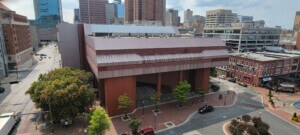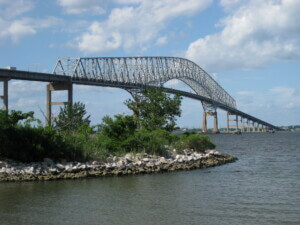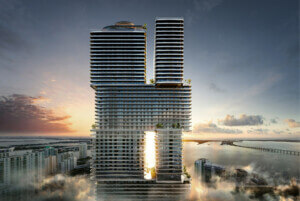Urban designer James Corner assumed his chances of working on the Middle Branch waterfront project in Baltimore were over when the organizers of an international design competition announced that another firm had won and his team came in second.
But then he got a call from the competition sponsors, telling him that the winner had backed out and inquiring whether he might still be interested. Of course, he was.
“It was a project we felt very passionately about,” said Corner, founder of James Corner Field Operations, which is headquartered in New York but has offices on both coasts and in China.
“It hurts when you put your heart and soul into something and you don’t get to take it further.”
This was his third chance to work on the Middle Branch waterfront, after a plan for a private developer fell through more than a decade ago for one of the communities in the area, Westport.
Now he says he’s ready to get “back in the saddle,” assuming his team can reach an agreement on a contract with the City of Baltimore and others in the public-private coalition serving as the client.
The challenge is daunting: To develop a master plan that will guide the development of more than 11 miles of land along the Middle Branch of the Patapsco River, a picturesque waterway in south Baltimore, and provide strategies for better connecting various communities on either side of the Middle Branch to the water and to each other.
The circumstances that prompted the change in designers were unusual, to say the least. The competition winner, Rotterdam’s West 8, withdrew from the prestigious commission after a photo surfaced showing the children of one of its former employees in blackface at a 2012 party at the company’s headquarters in Europe.
In a city that’s 63 percent African American, at a time of heightened awareness of the need for racial equity and justice, the photo prompted calls for Baltimore’s elected officials to sever ties with West 8 even though the photo was nearly eight years old and showed children of a former employee, not anyone working on the project itself.
West 8 founder Adriaan Geuze immediately withdrew and apologized so as not to hold up the project, and the firm freely relinquished to the city ownership of all the work it had done so far. The competition rules said the sponsors should turn to the runner-up if the winner couldn’t fulfill the terms of its contract, and that led to the call to James Corner Field Operations.
A final contract with Field Operations has not been signed, but city officials recently disclosed that they are negotiating with the firm to be part of a reconstituted team that includes the consultants West 8 originally assembled, including Mahan Rykiel Associates of Baltimore, plus several consultants who have been added to the team to focus on issues such as justice, equity, diversity and inclusion.
Last week, Corner, 58, picked up the phone again and talked about his reaction to being called back, his hopes for the project, how it compares to other work his firm has done, and what it’s like to work in the public realm at a time of increased awareness of the need for inclusiveness and diversity.
The interview has been edited and condensed for clarity.
AN: What was your reaction to being called back?
James Corner: It was fine. I mean, we came a very close second, apparently, in the competition. It was just a matter of a point or two. It was a project we felt very passionately about during the competition and during the process, so when they invited us to come back in, we were very happy to do that.
You’re familiar with the area, too, having worked with a private developer on a project that didn’t move ahead. Was that 10 years ago?
It might have been more. I think it stopped at the crash in 2008. So, like 2006, 2007, 2008.
Do you feel comfortable coming in this way, working with a team assembled by West 8?
Almost all of our projects are collaborative and have multiple team players, so we’re familiar and comfortable with that.
What ideas from the competition would you hope find their way into the master plan? Is there anything you feel strongly about?
The competition was really a test of how you think about things. We had a variety of ideas and we rendered them up, but we’re not fixed to them. We need to go out to the community and see what their main interests are, what their passions are, what their ideas are, what their needs are, and address those more directly than we could do in the competition.
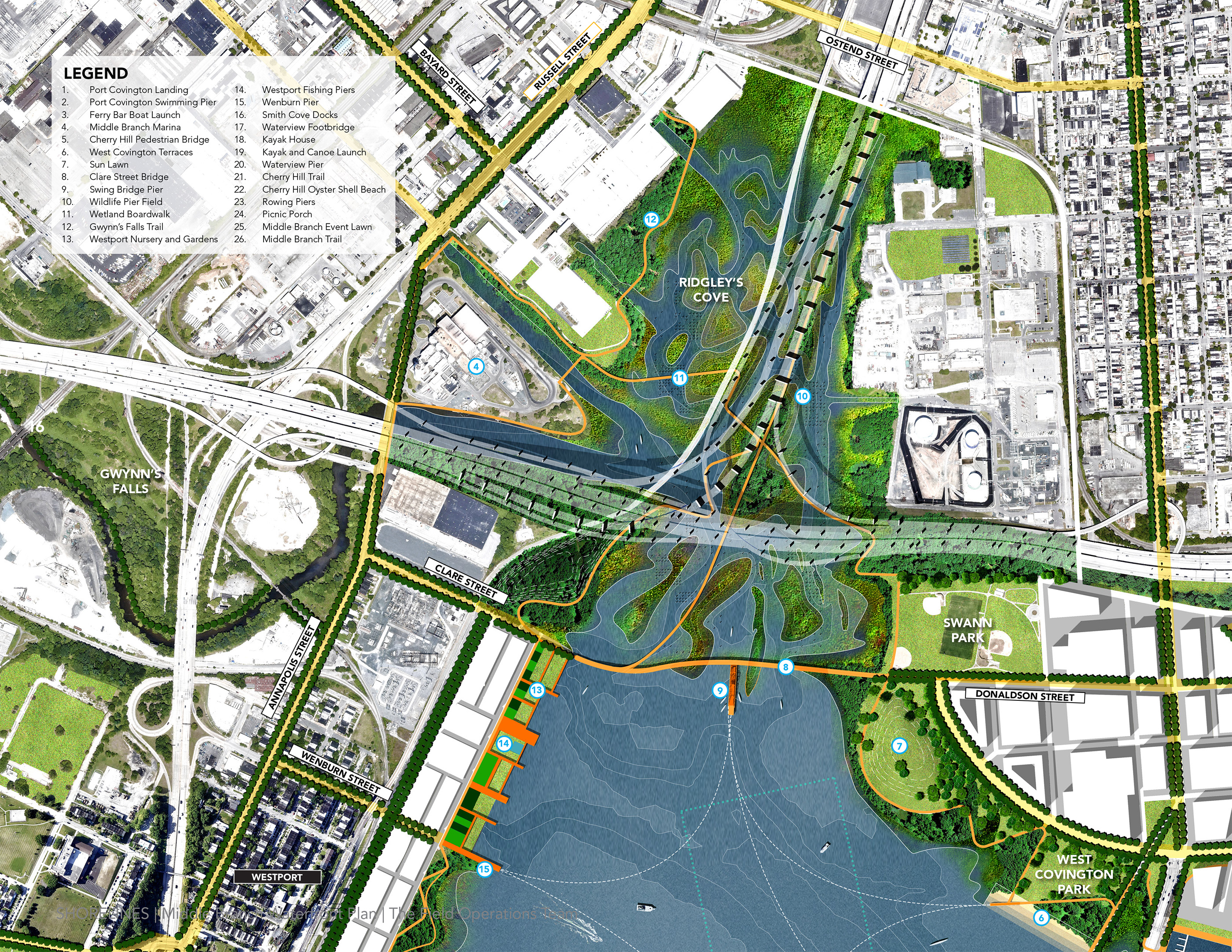
You didn’t have an opportunity during the competition to meet with the community representatives and hear from them?
There was a brief meeting, but it was cursory. It didn’t get into any depth. Moving forward now, a big part of the effort will be getting to know the different communities, getting to know the neighbors, and literally just asking them what their dreams are, what are some of their needs, what would they love to see.
On the one hand, it’s all about connectivity. It’s all about getting people comfortably to the waterfront and having amenities there that are things that they would enjoy and would do, whether they’re picnics and barbecues or boating or fishing or strolling or just meeting friends or whatever. We need to get a good grip on what people would like to see. But it’s also about revitalizing the neighborhoods themselves, too, and bringing a fresh sense of energy and a fresh sense of identity to the Middle Branch, not simply as waterfront parkland but as a whole fabric of community, development and open space.
Going farther inland, you mean. Not just prettying up the thin sliver of shoreline.
It’s all about reaching inland. You could design the most beautiful waterfront in the world. If it doesn’t relate to people, if people can’t make sense of it, if it’s not what they want, then it will be empty. So it’s important to connect— intellectually, in terms of what people want, physically in terms of trails and pathways, clear connections that feel safe and welcoming—but also to get into the neighborhoods themselves and to try to look for improvements there, in terms of how we can improve the quality of life and the kinds of amenities that people have.
You also did that with your previous master planning work for the private developer in Westport?
A: Westport was another good example of a very holistic approach towards urban planning, where we looked at housing typologies. We looked at affordable housing alongside developer-rate housing, and we integrated the architectural development with the open space and with the public realm and tied it to transit and mobility.
So, these areas of work, if you will, housing and urban development, transit and mobility, and open space, landscape, public realm, environment, especially in the face of climate change, changing climate, issues of resiliency, issues of flooding, issues of addressing changing weather, it’s a very holistic and comprehensive approach, and I think that’s very important. That’s why we’re very excited about the opportunity.
What did your previous plan for the Westport section of the Middle Branch call for?
The plans for that had a mixture of very low-rise townhouses mixed in with midrise loft-type buildings with I think there were just one or two towers. It was an urban mix, low-rise with high-rise and also, you know, primarily housing but there were also business and commercial opportunities too. But the waterfront in the Westport scheme that we did was very soft. It was a wetlands project. It had to do with restoring a very soft water’s edge and having boating access and fishing access to the water.
That seems to be consistent with what they’re looking for now, a softer edge, the antithesis of Baltimore’s more hard-edged Inner Harbor redevelopment.
Exactly. We kind of call this a green-blue harbor. It’s about green and blue. It’s not about concrete and hard spaces.
I understand the community wanted to go to the second-place team and not just have the planning effort keep going with the West 8 team but without West 8. They wanted to follow the ground rules laid out at the start of the competition.
That’s right. And I think they realized that this is a project that deserves international experience, which we bring, and it’s a project that needs to be very sensitive and respectful of the local context, and we feel very comfortable with that too. I mean we had experience there with Westport, but we also are based in Philadelphia and we intend to be very close to working with the community directly. It’s this combination of international experience but also with a very strong sense of local respect and a sense of place.
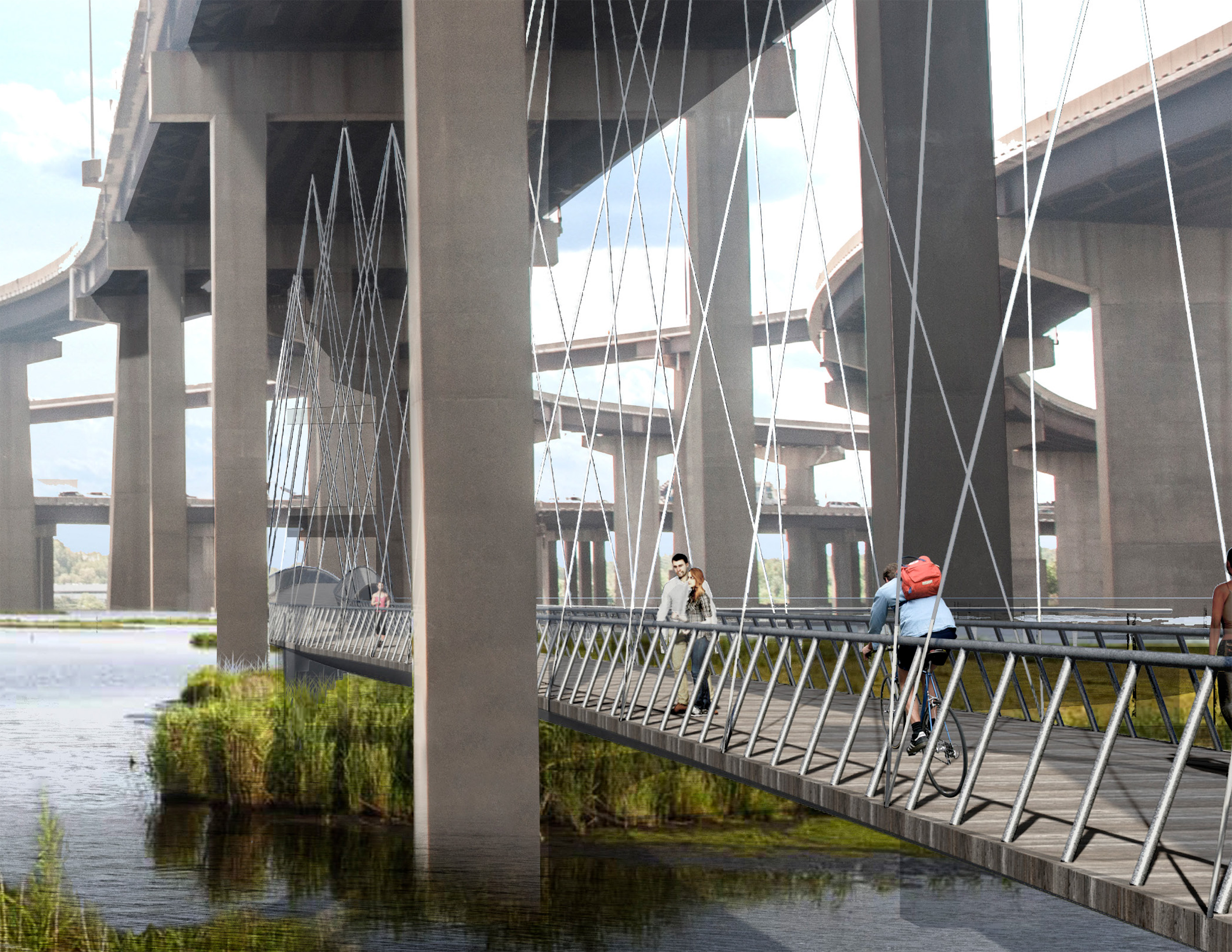
Cherry Hill is one of the disadvantaged communities along with Middle Branch, and it has government-subsidized housing close to the water. Westport is another disadvantaged community that stands to benefit greatly from this planning effort.
It’s all about holistic, comprehensive, inclusive work, as opposed to a lot of individual and separate projects. You just said that Westport could benefit from this and the way in which it will benefit is through being integrated into a holistic and inclusive and interconnected framework. We’re trying to avoid developments and projects that happen in isolation and instead try to make sense of projects and developments as a more comprehensive and inclusive vision.
There are a lot of projects underway at various stages already—plans for a new waterfront headquarters for Under Armour, redevelopment plans for Port Covington and Westport, a new recreation center for Cherry Hill. There are lots of projects where you can knit it all together, but then you can also add your own vision. Do any of your other projects have a racial equity component to them the way Baltimore’s does?
Brooklyn, certainly, was a case in point. Domino Park. There were previous plans for that site that essentially cut off the waterfront from the neighborhood, whereas the plan we ended up developing with the developer brings the streets through and invites the neighborhoods in. There are a lot of Black and Latino and other groups there, and they love it. Fresh Kills [a park on top of a capped landfill on Staten Island], while I’d say it’s ethnically less diverse, still, economically, there are a lot of disadvantaged communities there who were stigmatized because of the landfill history. Imagine living with thousands of trash trucks and smell and stench every day.
That’s what South Baltimore lives with, having housing and businesses near a large incinerator.
Many of these projects that we work on, they’re not in glamorous or prestigious locations, necessarily. They’re all about trying to do good for communities that have been dealt a bad deck of cards. Trying to use public open space and exposure to nature and environment and a sense of ecological wholeness is all about what we do.
Your firm is known for the High Line and Chicago’s Navy Pier other very glamorous projects, but you also have a history of working to transform downtrodden areas.
Well, I’d be careful. I don’t know why the High Line has all of a sudden got a reputation for [being] a glamour project. It’s a cool project, in that it’s an amazing site. But remember, when we started, that was in a very blown-out part of town. Most of the buildings and structures there were old warehouses and storage facilities. It certainly wasn’t glamorous when we started on it. I think that whole side of town, largely through rezoning and economic initiatives has become a developer haven. So now it’s become glamorous, OK.
Is the same thing going to happen in Baltimore?
No. We’re certainly not trying to gentrify anything. Gentrification is when existing residents and communities get pushed out. We’re certainly not looking to do any of that. For the people who live there now, [the goal is] to create an environment where they can remain and have an even better, higher quality of life.
If it’s a 10-year project, are you in it for the long haul?
We’ve been working at Fresh Kills for 20 years now. We’re still working on portions of the High Line. It’s been 15 years. We’re still working on Seattle’s Central Waterfront. It’s been 10 years. Many of our projects go on for a long time because they’re very big. They stop and start. They’re complicated. I wish it could be quicker. I mean I would love for the people of south Baltimore to begin to see results, tangible results. You know, plans are one thing, but for them to see tangible results that they can use and enjoy, it should be a key priority.
One of the things that we put forward to [the clients] is to start to prioritize some projects that we call ‘early wins.’ These are relatively easy-to-pull-off projects. They’re not that complicated or they’re not that expensive, but they will start to raise visibility. They improve access. And they provide an immediate amenity and an immediate thrill for the people who live there, to feel positive and to feel confirmed in their own minds that positive things are going to come.
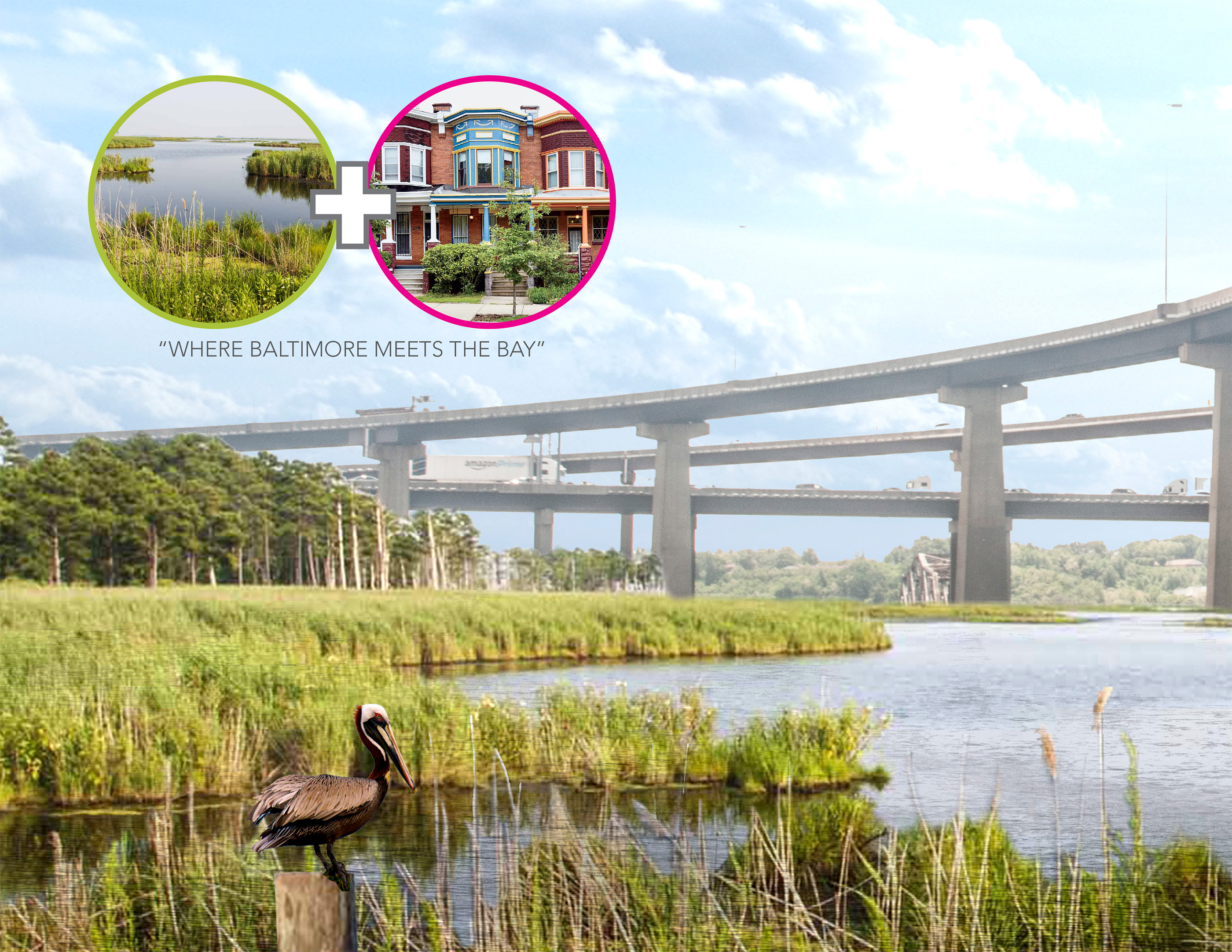
Such as?
We’ve been looking at a few waterfront projects. A boat dock; a sort of tree nursery that’s also a public garden on the waterfront; certain events like pop-up events where you can have food trucks and other sorts of festival-type events, market-type events that just begin to activate and begin to get people out on the waterfront.
One difference between the West 8 entry and the Field Operations entry was that West 8 threw out some big, expensive ideas that you didn’t, such as a new vehicular bridge connecting Ferry Bar Park with the south shore. West 8 said they have given ownership of their ideas to the city. Are there any of their ideas that you might consider?
I think all things are on the table, and we’re investigating and exploring ideas. Those ideas, but a lot of other ideas, too. It really comes down to feasibility. I think we don’t want to push for things that will never happen because they’re a billion dollars. Nonetheless, if there are ideas here where the investment makes sense and where it adds real value and there’s a value return—in other words, you’ve invested in something and it’s going to pay back—then those ideas are worth exploring.
At this point, you don’t see anything preventing this from happening?
Everything is going to work out. There are no issues here. It just needs signatures and approvals. But we’re in a very good position, very excited, very passionate, ready to go.







